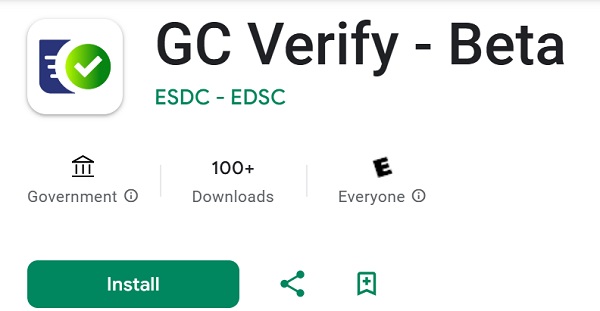MacDonald Laurier Institute
Peterson’s case demonstrates where professional regulators have gone astray
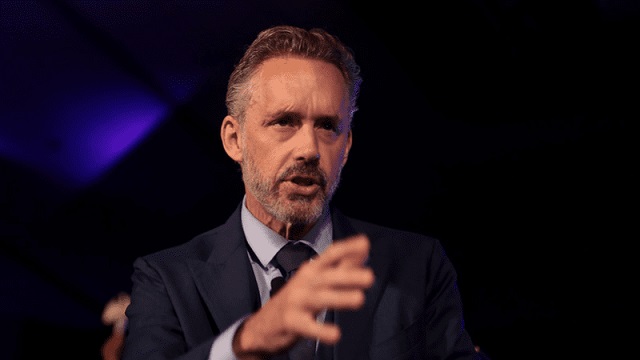
From the Macdonald Laurier Institute
By Stéphane Sérafin
Professional regulators are losing sight of the purpose their disciplinary authority is supposed to serve, to protect society by preserving professional competence.
Members of restricted professions – doctors, lawyers, accountants and psychologists, among others – are subject to the disciplinary authority of their respective professional regulators. This arrangement is intended to ensure a minimum level of professional competence and to protect those relying on these professional services.
This has obvious advantages over purely market mechanisms, at least in theory, owing to the fact that professional regulators can set standards for members that apply before a member has engaged in serious professional misconduct. However, professional regulators have attracted significant controversy in Canada over the past few years as attempts to police members’ off-duty speech and conduct have become a recurring news item.
The problem is that professional regulators are losing sight of the purpose their disciplinary authority is supposed to serve – to protect society by preserving professional competence – and are policing members values for the sake of perceived reputational interests.
While it is tempting to conclude that the difficulties in these controversial cases arise from straightforward regulatory overreach, the problem is more complex. The fact is that regulators have always had the ability to police off-duty conduct, and for good reason, since such conduct may bear directly upon member competence. It is not that regulators are suddenly policing off-duty conduct which used to fall entirely outside their purview, but that the kinds of expression they are trying to censor are no longer focused on protecting society from an incompetent professional but on protecting themselves and their colleagues from association with political views which they find distasteful.
Professional regulators should reverse course, return to their mandates, and focus on ensuring professional competence, not political alignment, among their members.
Consider the best-known Canadian controversy concerning former University of Toronto professor-turned-social-media-influencer Jordan Peterson. As a member of the College of Psychologists of Ontario, Peterson was ordered to undergo social media training following complaints that his social media posts were discriminatory and unprofessional. The College felt that it could make such an order against Peterson without subjecting him to a full disciplinary procedure. It also felt that it could do so solely on the basis of complaints that did not originate with his clients, but arose out of positions that he had publicly staked out on controversial political and cultural issues.
When Peterson challenged the decision through a judicial process, the Ontario Divisional Court found that the College’s decision was reasonable. The Court was of the view that professional regulators had always held the requisite jurisdiction to police member expression, even when that expression did not arise in the context of a member’s strict professional activities. This included the capacity to police expression considered “discriminatory”. Moreover, it was thought to be enough that the expression might adversely impact the reputation of the psychology profession.
The principles invoked by the Divisional Court in this case are difficult to contest in the abstract. To recognize the authority of a professional regulator over a given profession, rather than relying on market mechanisms to ensure basic competence, means that the professional regulator must take a broad view of the kind of conduct that could fall within its ambit.
It would be difficult to claim that the off-duty conduct of a member is entirely without interest for professional regulators, since such conduct can be relevant to determining whether a particular person is fit to remain a member in good standing. An individual who commits a sexual assault outside of work hours, for example, is probably not fit to act as a clinical psychologist, just as someone who embezzles funds in a context divorced from his or her work should probably not be allowed to operate a trust account as a lawyer. No doubt, certain forms of expression that are not directly connected to the member’s professional activities – defaming others, threatening violence, or airing confidential information other than client information – raise similar concerns.
Criminal and civil court processes are not designed to address these concerns, since their purpose is to establish a criminal infringement of community norms and civil liability towards another person, respectively. Not all criminal acts or civil wrongs necessarily impugn a member’s professional competence, and conversely, there may be grounds to sanction a member where the threshold for criminal or civil liability has not been met.
But to say that professional regulators ought to have jurisdiction over the off-duty conduct of their members is one thing; to determine what type of off-duty conduct, specifically, properly attracts their disciplinary jurisdiction is another. The trouble with the Peterson case, as with many of the other recent Canadian controversies, is that the justification offered for the exercise of professional regulatory jurisdiction does not fit the paradigm offered by the examples just referenced, in which the off-duty conduct, including off-duty expression, can be taken to cast doubt on the member’s ability to carry out his or her profession. Instead, these cases present the regulation of off-duty expression by regulators in a manner analogous to the employment context, where the concern is not with the protection of the public interest, but in allowing employers to preserve their own reputation and to avoid vicarious liability for the acts of subordinates.
The view suggested by the Divisional Court in the Peterson case – that professional regulators are simply doing what they have always done – misses the widening focus of regulators beyond professional competence. This widening focus has been precipitated by at least two factors.
First, technological shifts have significantly altered the balance of power between professional regulators and individual members of the public. In an era of social media, an opinion that would have once been expressed to a small audience now finds itself exposed in some cases to an audience of millions. The possibility that someone, somewhere, will find offense, or decide to find offence, with the expression of opinions grows with the scope of the audience. Moreover, the nature of social media is such that any member of that audience can react, in real time, individually or in concert with others, to the opinion being expressed. This means that potentially every public utterance, whether reasonable or not, creates a reputational risk not just for the individual member, but also for the broader profession. Professional regulators are unsurprisingly concerned by this possibility, which affects their own vested interests.
Second, and perhaps more importantly still, broader cultural shifts have also significantly altered the kinds of expressive content that regulators are likely to treat as “unprofessional” or otherwise raising reputational concerns.
Consider another decision, Simone v. Law Society of Ontario, which was narrowly decided by the Law Society of Ontario Tribunal (the body charged with adjudicating complaints against Ontario lawyers and paralegals). In that case, Lisa Simone, an individual seeking membership in the Law Society of Ontario as a paralegal, was subject to “good character review” because of social media posts that she had made which were, among other things, critical of vaccine mandates, the Black Lives Matter organization, and “pride” events. While the Tribunal ultimately decided in favour of the candidate’s good character, and thus her admission as a paralegal, a majority did so apparently on the sole basis that the candidate had expressed remorse for the social media posts in question.
As with the Peterson case, the comments that landed Simone into trouble were associated with positions on the “right” of the political spectrum. They were also brought to the attention of the Law Society through complaints by members of the general public, and were used against her outside of a formal disciplinary proceeding. In other words, this was also not a classic case involving a disciplinary proceeding brought for off-duty conduct that undermined confidence in Simone’s ability to work as a paralegal. Rather, the concern was that the social media posts themselves reflected poorly upon the profession, not just because of their tone (though this was the formal argument made against Ms. Simone’s accreditation) but also, ostensibly, because of their content. This appears to be why the majority in that case repeatedly reaffirmed Ms. Simon’s obligation to comply with human rights laws, as though the mere expression of views critical of vaccine mandates, the Black Lives Matter organization, and “pride” events might infringe those obligations.
To say that professional regulators appear increasingly concerned with the reputational interest of their profession is, in this context, to say that professional regulators appear increasingly concerned with the appearance of complying with narrow cultural and political orthodoxies. These are “orthodoxies”, since they are views that are now largely taken for granted among much of the professional class, or at least among those individuals who are most likely to staff professional regulators and make decisions concerning member conduct.
Where a member of a restricted profession expresses personal viewpoints at odds with these admissible perspectives, the concern is not that the member lacks the requisite competence to exercise their role. Rather, the concern is that the mere expression of these views is “unprofessional”, in the sense that they are potentially damaging, or at least embarrassing, to the profession. That is, the expression of this views is “unprofessional”, owing to the fact that the member’s personal opinions are at odds with the values that the regulator thinks the profession should embrace.
That said, while the opinions that have run afoul of professional regulators have typically been associated with the “right” of the political spectrum – as in the Peterson and Simone cases – there have also been cases in which the authority of professional regulators has been invoked to punish those expressing views more typically associated with the “left”. In one particularly notable incident after the October 7 attacks on Israel by Hamas, students enrolled at the Faculty of Law at Toronto Metropolitan University (formerly Ryerson University) circulated a letter that purported to express solidarity with Palestinians, but also included language referencing a right of “resistance”. Many in the legal profession interpreted the letter as condoning the October 7 terrorist attacks. This prompted calls to deny the students articling positions (a requirement of lawyer licensing in Ontario) and potentially to deny them accreditation altogether.
This and similar cases that have arisen since October 7 may well suggest that the phenomenon that has until recently targeted mostly “right”-coded political opinions may now be weaponized by either side of the political spectrum.
What each of these cases undoubtedly serve to highlight, in any event, is a need to recover the importance of professional competence as the aim of regulators. Ensuring professional competence is the very reason for which professional regulation exists, and why determinations as to who can exercise these particular professions are not left solely to the market.
Canadians need professional regulators to return to their mandate: ensuring a minimum level of professional competence and protecting those relying on professional services. Regulators should not concern themselves with whether the opinions expressed by members are potentially embarrassing because they happen to fall outside the “values” that regulators believe professionals should embrace.
Stéphane Sérafin is an assistant professor in the French Common Law Program at the University of Ottawa.
Business
The “Disruptor-in-Chief” places Canada in the crosshairs

Not for the first time, the Macdonald-Laurier Institute’s Policymaker of the Year is not a Canadian.
In 2019, our laureate was Xi Jinping, leader of the People’s Republic of China, whose long arm reached far into many aspects of policymaking in our nation’s capital.
That helps to underline our intention in conferring this recognition. Policy influence can be used to Canada’s benefit or detriment. In naming our annual Policymaker of the Year, MLI does not endorse their policies; instead, we seek to draw to the attention of Canadians those people who have had the most influence on public policy in this country – for good or ill – in the past year.
And in 2025, who can deny that US President Donald Trump, the Disruptor-in-Chief, has exercised an outsized influence on Canadians – on their hopes and fears, on their political preferences, and, most importantly for our purposes, on the policies pursued by the Canadian government?
How has Donald Trump spurred policy change in Canada? Let us count the ways:
First, set aside for the moment any focus on specific policy areas and just think about the President’s style and strategy. Anyone who has read The Art of the Deal knows that Trump is quite straightforward in avowing that his dealmaking strategy sets out to frighten and intimidate the other party with a degree of unpredictability, bravado, and unwillingness to be bound by past assumptions that is sometimes just breathtaking to contemplate.
On the other hand, what on the surface appears to his opponents as simply irrational is in fact nothing of the sort. He sets out to frighten and intimidate, but he also sets out to get deals done, which cannot happen with negotiating partners paralyzed by fear. And in fact, the list of deals he has done in less than a year in office is impressive: NATO members have made big commitments to increase defence spending, the war in Gaza is paused by a (shaky) ceasefire of his design, trade deals have been struck with many partners, including the EU, the UK, Mexico, and even China … though notably, not with Canada.
Here at home, Trump has riled Canadians with his comments about annexation and disputed borders, laid a heavy finger on the 2025 electoral scales, and met repeatedly with Prime Minister Mark Carney – but equally repeatedly sent him on his way with little to show for the Prime Minister’s efforts as supplicant. Policies that seemed settled, like our purchase of the F-35 fighter jet, our deep integration with the US economy, and our feeble attempts at even-handedness in the conflict in the Middle East, all seem to have fallen victim to Ottawa’s ill-advised urge to stick a finger in Donald Trump’s eye, whatever the cost.
Like it or not, Trump has reminded Canadians in no uncertain terms that America is the elephant and we are, if not exactly a mouse, certainly a beast whose wellbeing depends on American forbearance and good will. The question of whether we can calm the rampaging elephant and charm him into a better humour or fall back on much less profitable relations with other countries far away is THE question that will preoccupy policymakers in Ottawa this year and for several years to come.
It is against this backdrop that several major dimensions of Canada-US relations have been thrust into the spotlight – none more dramatically than trade.
Weaponized Tariffs and Fractured Trade
Tim Sargent
For many Canadians, Donald Trump’s re-election on November 5, 2024, while not a cause for celebration, was also not an existential threat to our economy. After all, when Trump was first elected in 2016, his threats to tear up the North American Free Trade Agreement (NAFTA) ultimately came to nothing, and the new version of NAFTA that was negotiated by the US, Canada, and Mexico (we call it CUSMA, the Americans call it USMCA), was broadly similar to its predecessor, with almost all Canadian goods able to enter the US market tariff-free.
That complacency was almost immediately shattered when the President, even before his inauguration, announced his intent to slap a tariff of 25 per cent on Canadian (and Mexican exports), supposedly in response to Canada’s failure to stop fentanyl from crossing over the US border. The shock was rapid, and the implications unmistakable.
Once in office, Trump made good on his threat and imposed the 25 per cent tariff on all Canadian exports except energy, which was subject to “only” a 10 per cent tariff. The sheer interconnectedness of the North American economy forced Trump to partially back down and exempt CUSMA-compliant goods from the tariffs. However, because they raised input costs for US manufacturers, Trump opened another front by slapping tariffs on steel, aluminum, autos, copper, lumber, and furniture in the name of national security, overriding the CUSMA treaty that he had signed. While these tariffs apply to all countries, these are all commodities for which Canadian exporters are very dependent on the US market, and which are very important for the Canadian economy.
While trade disputes with the US have not been unknown since the signing of the original Canada-US Free Trade Agreement in 1988 – softwood lumber is the most obvious example – no one expected Trump to take aim at the whole Canada–US trading relationship, which accounts for almost a quarter of our GDP. This escalation marks a break not just with economic norms but with decades of strategic restraint.
None of this augers well for the negotiations for the renewal of CUSMA, which are supposed to conclude in the summer of 2026, or the broader Canada-US trading relationship. Indeed, it is not clear that the renewal document will be worth the paper it is written on, given that Trump has shown no compunction in violating the terms of the original agreement. Perhaps even more fundamentally, the President, reflecting a broader strand of America-first nationalism, simply does not see trade as a mutually beneficial activity; rather, it is a zero-sum game in which the only way for the US to win is for others to lose. The fact that basic economics says the opposite seems to be neither here nor there.
All this leaves Canadian policymakers with some unpleasant alternatives. While the Carney government originally attempted to retaliate by imposing tariffs of its own, the reality is that these are pinpricks to the US, for which Canadian exports are only a few percentage points of GDP. Furthermore, tariffs hurt Canadian consumers. The other alternative, which the government is now pursuing, is to diversify Canada’s trade away from the US. However, Canadian governments have been trying to reduce their reliance on the United States since at least the 1970s, with little success. Geography and economic gravity continue to dominate: the US will always be the most obvious market for our exports, even with tariffs.
Perhaps the most that Canadians can hope for is that Americans will, as has happened in the past, come to realize that a close and stable trading relationship with Canada is in their national interest just as much as it is in ours.
Trade Tensions Fuel Canadian Oil Revival
Heather Exner-Pirot
Donald Trump’s tariffs and threat to the Canadian economy have meaningfully shifted both the public understanding and attitude towards oil and gas. Perhaps in the past it could be seen simply as something Alberta produced, an embarrassing source of global emissions. After 2025, it became clear how essential oil production is both to our economic health and our global standing.
Oil is Canada’s largest export, and most of it goes to the United States. When Trump declared in January 2025 that “we don’t need their oil and gas. We have more than anybody,” it was a tell. Canadian oil and gas is precisely the thing we produce that the United States needs more than anything else. In fact, that same month the US imported a record amount of Canadian crude oil: 4.27 million barrels; the most any country has ever imported from another in the history of the world.
This newfound appreciation of oil and its geopolitical importance brought a long-dead idea back to life: an oil pipeline to the northwest coast of British Columbia, the value of which has always been in diversifying our market for heavy oil from the US to Asia. The source of hard fought culture wars in the 2010s before being approved in 2014, rejected by Trudeau in 2018, and handed the final indignity of a tanker ban in 2019, a Northern Gateway-type pipeline is now not only possible, but even likely. In every public opinion poll in 2025, such a pipeline has enjoyed majority support. It is the centrepiece of the landmark MOU between the federal and Alberta government that has as an explicit goal increasing oil and gas production.
Canada has always had the resources of an energy superpower. Trump’s threats have done more to give us the ambition of one than anyone or anything before him.
“Elbows up” and the New Anti-American Nationalism
Mark Reid
Donald Trump’s return to the White House drastically altered the course of Canadian politics. The ensuing fallout – fuelled by threats of tariffs and incendiary “51st state” rhetoric – became the key catalyst that propelled Mark Carney’s Liberals to victory on an “elbows up” platform.
This resurgent Canadian nationalism was defined by a sharp strain of anti-Americanism in general, and a profound dislike of Trump in particular.
As Trump slapped tariffs on Canada (and mused about annexing Greenland), the Prime Minister and provincial leaders promised a “Team Canada” approach to counter the President’s aggression. Canadian politicians from coast to coast earnestly vowed to remove interprovincial trade barriers, back major national projects, and present a common front.
That unity quickly faded.
Faced with new rounds of tariff threats, Carney’s government shifted to diplomatic conciliation, rolling back the Digital Sales Tax and offering border security concessions to avert economic disaster. Supporters called it pragmatism; critics called it a surrender.
Meanwhile, the Team Canada vision turned out to be a mirage. Interprovincial squabbles over a bitumen pipeline to tidewater in BC persists, while a multi-million-dollar Ontario anti-tariff ad, which aired on US television, infuriated Trump.
These internal divisions underscore a dangerous reality: Canada’s very sovereignty may be at risk. The US President’s recent “Trump Corollary” to the Monroe Doctrine clearly articulates his vision of American hegemony over the Americas, with Canada, presumably, as a sort of vassal state. The federal government now faces an impossible task – buying time in the hope that the US political climate shifts, while protecting Canadian autonomy from an American president who sees it as negotiable.
Smashing the Overton Window on social policy
Peter Copeland
Donald Trump is polarizing for good reason. He is rude, crude, lewd, and norm-breaking to an extraordinary degree: a former Manhattan Democrat and social liberal whose transgressiveness and contempt for precedent embody many of the very cultural tendencies the left has long celebrated. His impulsiveness seems to threaten alliances and raise geopolitical risks by the day – yet he now leads the most effective conservative movement in decades.
He also possesses unusual strengths. His entrepreneurial instinct has allowed him to see the gap created by an oblivious, or unwilling, left- and right- establishment political class on trade, immigration, cultural and social decline – and to seize the opportunity. His unfiltered political style contrasts sharply with the scripted, risk-averse habits of career politicians and the professional-managerial class. He seeks no validation from the Davos set or the media-academic establishment, making him unafraid to challenge orthodoxy. Trump’s rise is a sharp indictment of liberal elites on both sides of the political spectrum, who proved incapable of addressing the deep social and economic issues that he foregrounded from the outset of his presidency.
On issues like gender identity, DEI, and mass migration, rooted in an extreme open-society ideology of hyper-individualism and autonomy, establishment leaders had long been unwilling even to acknowledge the problems. Then Trump came along and threw open the Overton window on just about every issue.
For Canada, Trump’s impact is mixed. He expanded the envelope of the politically possible on topics thought untouchable just years ago, but his abrasive style has made Canadian elites – whose defining characteristic is anti-Americanism – more reluctant to pursue parallel reforms. On immigration, borders and defence, Ottawa is now moving; on gender, DEI, and education, it is retreating behind “Trump did it, so we won’t.”
Shredding Canada’s US security blanket
Richard Shimooka
President Trump’s successful upending of American foreign policy in 2025 has had profound and potentially long-term consequences, but few are as acutely felt as the changes he has forced upon the Canada-US security relationship. Trump’s actions have effectively ended the decades-long expectation that the United States would forever underwrite Canada’s defence and security, forcing a sea-change in Ottawa’s strategic calculus.
Since the Second World War, the foundation of the Canada-US security and economic relationship has been an interlocking system of security guarantees through alliances and free trade blocs. This synergistic mix, which bound states like Canada to a rules and values based international order conceived in Washington, allowed Canada to maintain a relatively small defence footprint, relying instead on overwhelming American firepower to deter its enemies.
However, Trump’s skepticism towards this foundation, evident since his first term, consolidated into decisive policy changes in his second term. By launching a devastatingly counterproductive trade war against Canada and other major trading partners and directly questioning the value of major alliances like NATO, he effectively declared America’s security commitments are no longer unconditional.
For Canada, this has meant a new urgency to foot a larger portion of the bill for continental security, a renewed focus on securing both the Canada-US border and the Arctic, and for finally meeting long-standing pledges to spend two per cent of GDP on NATO.
Ironically, while Trump’s pressure tactics have succeeding in pushing Canada (and other allies like Japan and Germany) to increase defence spending and become more self-sufficient, it comes at the cost of America’s ability to lead like-minded states. As US leverage wanes, Trump’s strategy may end up pushing America’s allies into the arms of strategic rivals like China.
Without American global leadership, states may prioritize a narrower brand of self-interest – one that is counterproductive to America’s overall strategic ends. Observe how Canada is now looking to rebuild its economic relationship with the People’s Republic of China, not merely for trade, but as a deliberate economic counterweight to its highly integrated trade relationship with the United States.
This impulse will likely be shared by many US allies. Indeed, allied nations in Southeast Asia may begin to doubt Washington’s commitment to the current geopolitical alignment and seek to balance their relationship with China. Some may even fall further into Beijing’s grasp, becoming the 21st-century equivalent of tributary states.
“Trump the Peacemaker” and the Politics of Force
Casey Babb
Donald Trump’s bold and fearless foreign policy decisions – especially regarding Israel’s war in Gaza and the broader Middle East – make him one of the most consequential and transformative political leaders in a generation. His combination of disruption, recalibration, and strategic risk-taking sought to redirect the trajectory of the Middle East in ways few leaders have attempted.
Some of these changes began during Trump’s first administration. The Abraham Accords, which normalized relations between Israel and several Arab states, reflected a shift toward open regional co-operation against shared security concerns. His decisions, like recognizing Jerusalem as Israel’s capital and cutting aid to Palestinian institutions, were commonsense corrections to what he viewed as unnecessary diplomatic ambiguities.
However, his most transformative actions in the Middle East happened in the aftermath of the October 7, 2023, Hamas terror attacks on Israel. From his 20-point plan for peace in Gaza and his efforts to bring home hostages, to the “12 Day War” between Israel and Iran, Trump made it clear that America’s support for Israel remains unwavering – signalling that Washington is willing to take decisive action in the Middle East to protect US and allied security.
Beyond the Middle East, Trump’s approach to China marked a sharp departure from previous presidents. Replacing engagement tactics with tariffs, export controls, and the framing of China as a key rival, Trump pushed for a shift in US policy that continues in his second term in office.
In Europe, Trump’s record on the Russia-Ukraine war is mixed. The President has pressured NATO allies to carry a greater load in terms of supporting Ukraine, and the US has continued to provide Kyiv with lethal military aid. However, critics worry about Trump’s personal relationship with Russian President Vladimir Putin: as the peace negotiations continue, will Ukraine eventually be sacrificed for American expediency?
Conclusion
Trump’s legacy remains unwritten. It may destabilize Western institutions, or it may be the jolt needed to shake a complacent boomer establishment out of its decadent, dogmatic slumbers.
Trump has clearly shifted the geopolitical landscape in both Canada and around the world – in ways no conventional figure could have. It is worth asking: would Europe have increased defence spending without American pressure? Would Canada have taken border security, immigration, defence, or energy policy seriously?
Even conservative governments – often differing little from liberal ones in practice – have lacked the capital or resolve to confront entrenched bureaucracies, and it remains doubtful whether any old-school Canadian libertarian-oriented fusionist, or a typical Wall Street Republican in the US, would have had what it took to win, yet alone enact the needed the reforms.
Trump was, and is, very much the man for the moment. Whether this shift leads to renewal or decline, only time will tell. Those same disruptive instincts have defined his approach to the world stage as well, reshaping geopolitics in ways Canadians cannot ignore.
Brian Lee Crowley is managing director of the Macdonald-Laurier Institute.
Tim Sargent is a senior fellow and the director of Domestic Policy at MLI.
Heather Exner-Pirot is a senior fellow and MLI’s director of Energy, Natural Resources, and the Environment.
Mark Reid is the senior editor at MLI.
Peter Copeland is the deputy director of Domestic Policy at MLI.
Richard Shimooka is a senior fellow at MLI.
Casey Babb is the director of MLI’s The Promised Land program.
Indigenous
Residential school burials controversy continues to fuel wave of church arsons, new data suggests
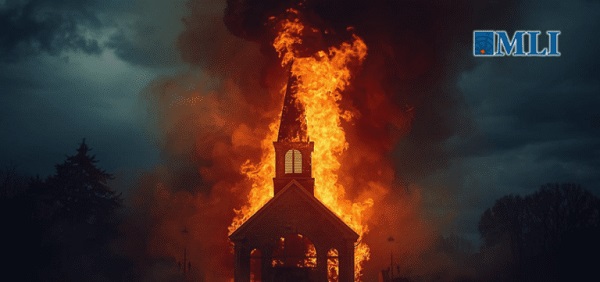
By Edgardo Sepulveda for Inside Policy
Church arsons surged again in 2024 according to new data released by Statistics Canada—continuing a disturbing trend first uncovered by a Macdonald-Laurier Institute investigation published last year.
Scorched Earth: A quantitative analysis of arson at Canadian religious institutions and its threat to reconciliation, which I published last April, warned that the arson wave – almost certainly spurred by ongoing anger over potential unmarked burials of children at residential schools –would not disappear without concerted government policy intervention.
Unfortunately, my prediction is proving accurate.
Newly available custom data from Statistics Canada confirms that arsons in 2024 continued at nearly double the baseline level established from 2011–17.
This persistent elevation is particularly concerning given that arson is a dangerous crime with significant financial costs and, in the case of religious institutions, broader implications for Canadian society and political discourse. Most importantly for those committed to Indigenous reconciliation, the apparent lack of effective policy response risks undermining public support for reconciliation efforts—suggesting these crimes are not being treated with the seriousness they deserve, particularly because many targets are Catholic churches associated with residential school legacies.
Scorched Earth developed specific terms and a conceptual framework to analyze arsons at religious institutions. First, I refer to “potential unmarked burials” rather than other terminology, including “mass graves” – language suggesting verified remains and, potentially, the site of clandestine burials. Neither has been established. No remains have been verified at any of the 21 announced sites. The Tk’emlúps te Secwépemc First Nation revised its own characterization of the Kamloops, BC, announcements in May 2024 to “probable unmarked burial sites,” a significant shift from its initial May 2021 announcement of “remains of 215 children.” This precipitated announcement, together with some of the initial media coverage in Canada and elsewhere, likely contributed to the intensity of the arson response.
Second, the conceptual framework, updated with the latest Statistics Canada data, separates “baseline” from “excess” arson associated with specific shocks, such as the announcements. It shows that arsons at religious institutions have remained elevated since the initial spike in 2021. Based on careful geographic statistical analysis presented in Scorched Earth, I demonstrated that the most likely explanation for elevated arsons was a criminal response prompted by the 17 announcements of potential unmarked burials at former residential schools, beginning in Kamloops, B.C., in May 2021. Four additional announcements occurred in 2024, bringing the total to 21. While data through 2023 showed no detectable increase in arsons related to the Israel-Gaza conflict, analysis of 2024 data suggests this changed: arsons in response to that conflict now constitute a minority of the increase above baseline levels, with the majority remaining those related to announcements of potential unmarked burials.
Investigation and Prosecution Rates Remain Insufficient for Effective Deterrence
Statistics Canada’s newly released custom clearance data for arson at religious institutions provides the first comprehensive official view of law enforcement effectiveness in these cases, superseding the preliminary compilation included in Scorched Earth.
Crimes in Canada are considered “solved” when police identify a suspect with sufficient evidence to support charges. Cases are then classified as “cleared” through two mechanisms: laying charges (“cleared by charge”) or alternative processes such as diversion programs (“cleared otherwise”).
As Figure 2 illustrates, the cleared-by-charge rate for all arson averaged 13.1 per cent over the 2011–24 period. For religious institutions, the yearly average reached 14.4 per cent—marginally higher but still concerning. The clearance rate for religious institutions shows significant year-over-year variability, reflecting the smaller statistical base compared to all arsons. The “cleared otherwise” category adds an average of 4.7 per cent for both arson types.
While these low clearance rates align with those for other property crimes, the continuing elevated arson rate suggests they provide insufficient deterrence for either first-time or serial arsonists. Evidence from Scorched Earth indicates that sustained clearance rates in the mid-30 per cent range—achieved by the National Church Arson Task Force (NCATF) in the United States during the 1990s—effectively reduced church arsons targeting predominantly Black congregations in the American South.
While my statistical analysis indicates that announcements of potential unmarked burials likely motivated many incidents, this remains circumstantial evidence. Direct evidence would require confessions or explicit statements of rationale from arrested arsonists, or credible claims of responsibility from organized groups. Out of the 306 arsons at religious institutions over the 2021-24 period, 53 resulted in charges and 13 were cleared through alternative processes, totaling 64 cleared incidents—an overall clearance rate of 21 per cent.
A clearance rate at this level, while insufficient for effective deterrence, makes it unlikely that most arsons during this period resulted from organized political, ideological, or anti-religious campaigns. A coordinated campaign would likely be visible to investigators even at this clearance level. Since police identify suspects in far more cases than they prosecute, investigators develop a broader perspective on potential culprits than clearance rates alone suggest. Law enforcement officials have not provided any indication of such organized campaigns.
Federal and Provincial Funding Addresses Searches But Ignores Consequences
Neither federal nor provincial governments have introduced policy initiatives addressing elevated arson rates at religious institutions, despite substantial new funding for related matters.
Following the Kamloops announcement, the federal government launched the Residential Schools Missing Children Community Support program, providing $246 million to hundreds of communities, including for research and field investigations. Separately, British Columbia, Alberta, Ontario, and other provinces have committed hundreds of millions in additional dollars, including programs to address mental health effects from the search process and announcements.
This funding inventory highlights a significant policy gap: substantial resources address the cause—announcements of potential unmarked burials—while none target the effect: arsons at religious institutions.
Even viewed narrowly as a crime issue, recent government responses to other property crimes demonstrate available policy tools. When auto theft peaked in 2023, the federal government announced $121 million in federal support, convened a national summit with all levels of government and law enforcement, and released a National Action Plan by May 2024.
Policy Gaps and a Call to Action
The NCATF, created in response to arsons targeting Black churches in the 1990s United States, achieved clearance rates sufficient to reduce incidents. Canada possesses the same policy tools but has not deployed them for residential school-related arsons.
This is not a matter of capacity or institutional precedent. Recent government responses to other serious property crimes, such as auto theft, demonstrate that Canada can mobilize coordinated federal-provincial action when it chooses to. The apparent policy inaction since 2021 for residential school-related arsons must end.
Canada is not powerless to stop the arsonists. The policy recommendations set out in Scorched Earth continue to be valid:
- Create a national or regional integrated police/fire investigations unit focused specifically on arson at religious institutions. This integrated unit would investigate arsons at all religious institutions—Christian, Muslim, Jewish, and others.
- Improve Indigenous police and fire protection services, including to ensure full Indigenous participation in the integrated unit.
- Complete the long-running project of building and maintaining a comprehensive and timely national and on-reserve database of fire statistics.
Law enforcement officials must thoroughly investigate and prosecute the arsonists. The attacks threaten reconciliation and full Indigenous equality—and they must be condemned by all Canadians.
Economist Edgardo Sepulveda has more than 30 years of experience advising clients in more than forty countries. He has written for Jacobin magazine, TVO Today, and the Alberta Federation of Labour, and has been lead author of three peer-reviewed academic articles in the last five years. He received his BA (Hon) from the University of British Columbia and his MA from Queen’s University, both in Economics. He established Sepulveda Consulting Inc. in 2006.
-

 Bruce Dowbiggin14 hours ago
Bruce Dowbiggin14 hours agoBe Careful What You Wish For In 2026: Mark Carney With A Majority
-
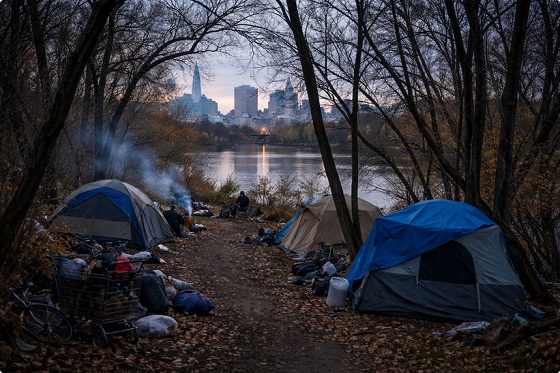
 Frontier Centre for Public Policy2 days ago
Frontier Centre for Public Policy2 days agoTent Cities Were Rare Five Years Ago. Now They’re Everywhere
-

 International22 hours ago
International22 hours agoNo peace on earth for ISIS: Trump orders Christmas strikes after Christian massacres
-
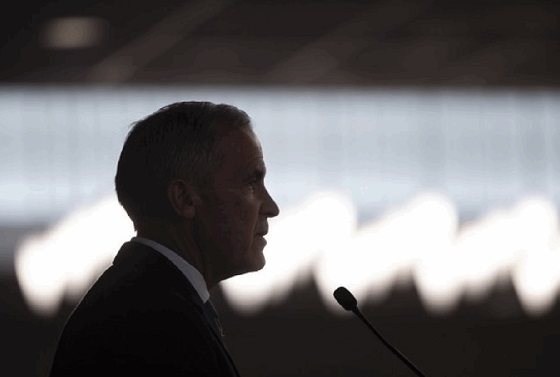
 Fraser Institute23 hours ago
Fraser Institute23 hours agoCarney government sowing seeds for corruption in Ottawa
-

 Energy13 hours ago
Energy13 hours agoNew Poll Shows Ontarians See Oil & Gas as Key to Jobs, Economy, and Trade
-

 Alberta23 hours ago
Alberta23 hours agoAlberta Next Panel calls for less Ottawa—and it could pay off
-

 Daily Caller21 hours ago
Daily Caller21 hours agoUS Halts Construction of Five Offshore Wind Projects Due To National Security
-

 Business10 hours ago
Business10 hours agoSocialism vs. Capitalism






